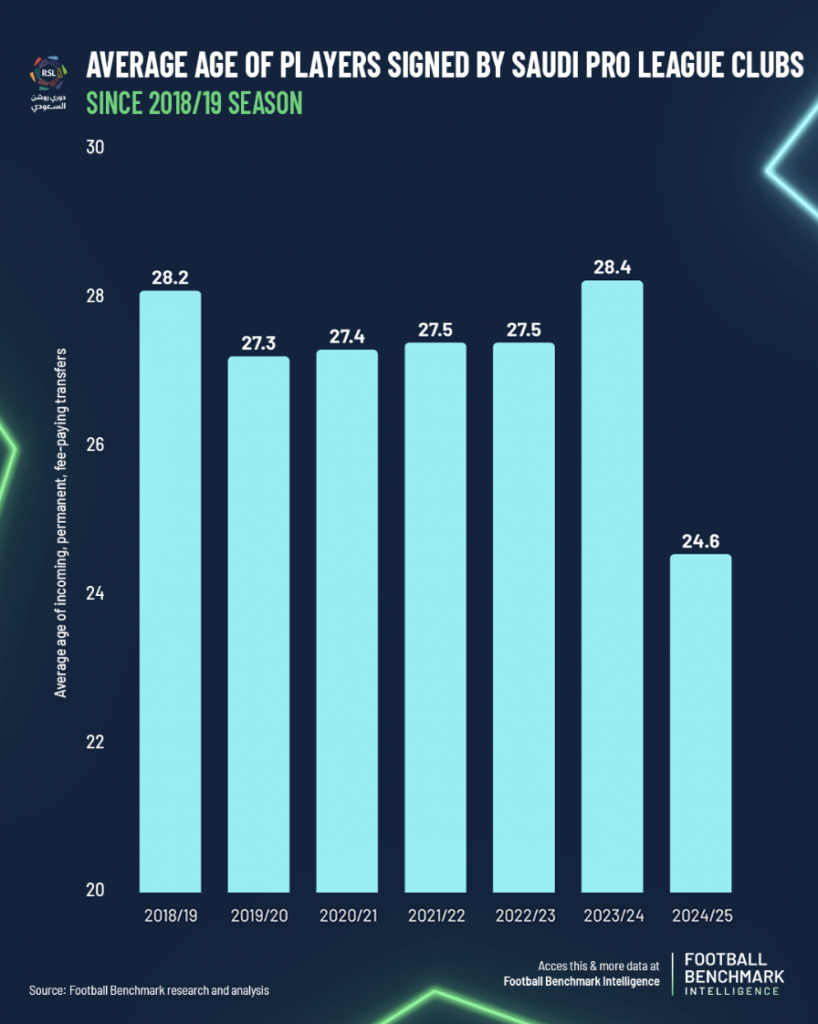February 14 – The Saudi Pro League’s (SPL) aggressive recruitment of ageing stars in 2023 reshaped global football’s transfer market. A new report from Football Benchmark shows the depth of the league’s tactical rethink with a new focus on recruiting younger players.
After spending nearly €1 billion in the summer of 2023/24 to recruit the likes of Neymar, Riyad Mahrez, and Sergej Milinković-Savić, Saudi clubs have shifted focus towards younger talent and a plan to secure a sustainable future on and off the pitch.
The league’s average player age stood at 28.8 years by December 2024, significantly older than Europe’s top five leagues. The influx of veteran players also created financial strain, with inflated wages and costly contract terminations forcing clubs to reconsider their approach. By the 2024/25 season, spending had been slashed by nearly half, and new signings had an average age of just 24.6 years.
Saudi officials claim this youth-driven shift is part of a long-term plan, but the reality appears more complex. Regulatory measures introduced in 2023, such as reducing squad sizes and lowering minimum age requirements, were designed to encourage local talent development. However, clubs have found themselves with limited options due to full foreign player quotas, forcing them to prioritise younger, less expensive signings.
The January 2025 transfer window saw the first signs of an exodus, with clubs offloading high-profile names like Neymar, Seko Fofana, and Anderson Talisca – raising questions about the sustainability of the SPL’s initial spending spree.
While the league has managed to sign young talents like Jhon Duran from Aston Villa, most U23 arrivals have been far less high-profile, including players from Spain’s second division and Barcelona’s B team. This suggests that, despite its financial muscle, the SPL is struggling to attract Europe’s most elite young players.
With Saudi Arabia set to host the 2034 FIFA World Cup, the SPL remains a crucial part of the country’s footballing ambitions. Football Benchmark notes that balancing international recruitment with the development of homegrown talent will be key to ensuring long-term growth.
However, the question remains: can the league truly build a globally competitive product, or will it continue to serve as a high-paying retirement destination for ageing stars?
The transition to a more measured approach suggests that Saudi football’s extravagant spending has hit a ceiling. Whether this new focus on youth can deliver long-term success – or simply mask the failures of the initial money-driven model – remains to be seen.
Contact the writer of this story, Harry Ewing, at moc.l1743666426labto1743666426ofdlr1743666426owedi1743666426sni@g1743666426niwe.1743666426yrrah1743666426




